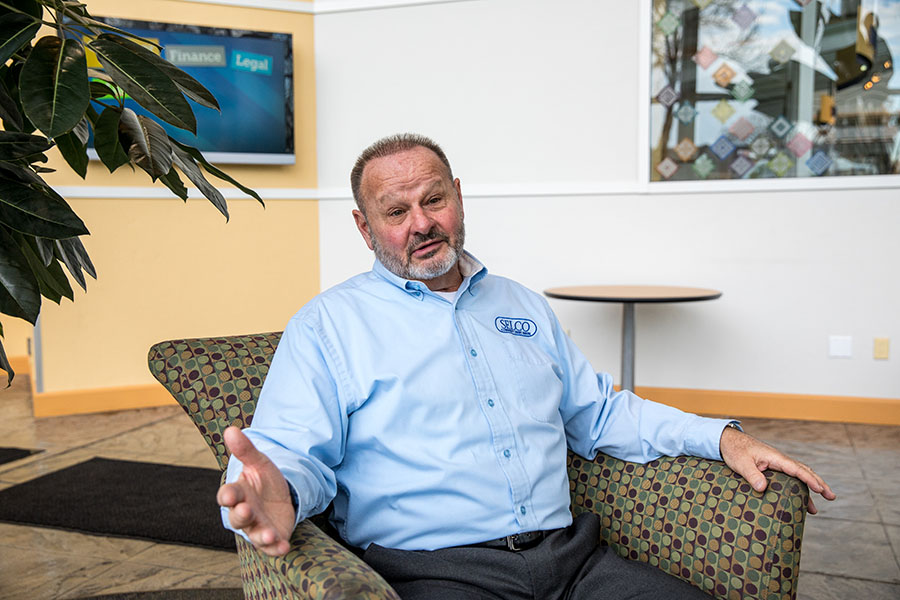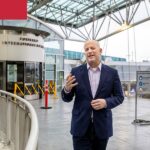Bob Newcomb, CEO of SELCO Community Credit Union, forecasts a bumpy economic recovery.
As a lender, SELCO Community Credit Union played an important role in distributing government stimulus money to individuals and businesses hit hard by the pandemic-driven recession.
Now that those economic stimulus programs have ended, Newcomb sounds a note of caution that the economic recovery may be long and choppy as it rebounds from its near global collapse in the second quarter of 2020.
This interview has been edited for length and clarity
How has the economic upheaval unleashed by the pandemic influenced your lending strategy?
We shifted gears quickly to supporting the loans of existing members. We put a lot of attention into working proactively with our members to help them bridge the sharp and deep collapse of the economy. We have done a lot of loan modifications, probably a couple of million dollars in loan forgiveness, deferrals of payments, skip-pay programs.
We went all-in on some of these government programs. We got behind the emergency relief assistance program here in Oregon. That was three days of issuing $500 checks through our branch networks. We had lines wrapped around the block of people needing the assistance at that time.
To what extent have you made steps to increase provision for credit losses?
From where we started in January 2020 to today, we have effectively doubled the amount of dollars in that war chest to offset what might be a spike in delinquencies, charge-offs, bankruptcies. We have aggressively funded that war chest to provide for that possible liability out there.
Banks have commented that they have not had big credit losses so far. Is that your experience too?
We have experienced very little increase in delinquency rates and bankruptcy filings. But you can end up with a false sense of security; you have to step back and look deeper. The reality is that Congress and the government, through economic stimulus programs, have replaced more income than was lost by consumers.
That has bridged and propped up, to some extent, many people’s ability to meet loan obligations and make payments. Then you add on to that all the modifications we have made to help members manage the hardship.
At some point, you begin to expose the vulnerability of families trying to meet those obligations as unemployment and furloughs become more long-lasting and outlive support.
 Photo: Jason E. Kaplan
Photo: Jason E. Kaplan
What sectors of the economy do you expect to see needing the most financial lending help in 2021?
This pandemic is a global health crisis and none of us are immune. But, clearly, there are issues in the travel industry, the airline industry, the entertainment sector, the service sector. Some online retail has performed well. We have seen auto lending pick up — we are at 85% to 90% of pre-pandemic levels.
There are soft spots in every business sector. I am particularly concerned about smaller businesses. These are folks who don’t have the deep pockets of capital of some corporations, and they don’t have the opportunity to diversify. The longer the duration of the pandemic, the more hardship they face.
Do you expect a pick-up in bankruptcies or loan defaults in 2021?
We expect 2021 to have choppy water for us and other lenders. The unemployment rate has improved to 8%, but the recovery and the improvement in unemployment is beginning to lose a little steam. There is nothing natural about this economic recession. Most recessions are caused when people lose the will to spend money.
In this recession, it was more driven by the fact that you couldn’t spend money; the cruise ships weren’t sailing, you couldn’t go out to eat, you couldn’t go on vacation. It is a very unnatural recession.
And the recovery has been very unnatural. It hasn’t been an organic recovery — the economy has been propped up by $3 trillion of federal assistance that has helped to keep the consumer at the cash register up until now.
We are bracing for a longer and flatter recovery that will last until 2023 or 2024, before the economy gets back to the pre-pandemic levels we saw at the end of 2019.
The residential mortgage loan sector seems the outlier. It is performing well.
We will do $50 million to $60 million in mortgage loans per month. One of the factors behind it are the historically low mortgage rates. It has been a bright spot for sure for lenders.
But at some point — even though we will be in the low-interest environment for longer — you start to bump up against the lack of affordability. It is a sellers’ market — people are getting bidding wars. The lack of affordability may dampen that bright spot in the economy at some point. And another wave of infections and lockdowns could dampen that enthusiasm as well.
What has surprised you most about the pandemic’s economic impact?
I have seen my share of economic cycles. This one is unique. It hit so hard and so fast. It has taken us longer to understand it. I was surprised at the resilience of the consumer. People have had the will to navigate this despite it hitting us very hard. People really tried to maintain as normal a lifestyle as they could.
The acceleration in the mortgage-lending market has surprised me. I would have thought more people would have deferred those kinds of purchases. To some extent, I didn’t expect Congress to go as big as they did with the CARES Act.
What is your expectation for economic performance in 2021?
We build framework assumptions as a backdrop on which we develop strategic plans and develop financial budgets. The expectation of a reliable vaccine will be pivotal. It might contain a pandemic, and with that we can have a good chance of finding our balance quickly.
I envision the unemployment rate will hover around 8% in 2021 — that is still twice the rate we were at pre-pandemic. We anticipate the economy will improve modestly in 2021 but will fall short of pre-pandemic levels we saw at the end of 2019.
From a lender’s perspective, we are bracing for a triple threat: the continued net interest spread compression. In this lower-for-longer interest rate environment we are in, we fully anticipate an increase in delinquencies and loan charge-offs, bankruptcies. And we expect a little pull-back in the overall loan portfolio and pull-back in demand through 2021.
We remain cautiously optimistic but expect a stiff headwind ahead for the next 15 months or so.
To subscribe to Oregon Business, click here.






